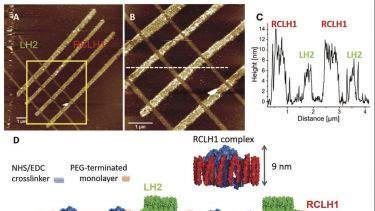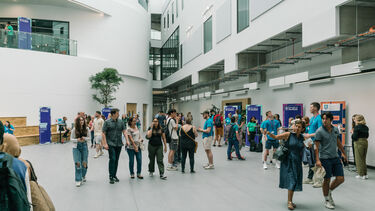Bionanotechnology of photosynthesis

New surface chemistries and nanopatterning methods are being developed in collaboration with Professor Graham Leggett to facilitate the construction of innovative architectures for coupled energy transfer and trapping. Nanometre-scale patterns of photosynthetic complexes have been fabricated on self-assembled monolayers deposited on either gold or glass using several lithographic methods.
These technologies provide unique opportunities to investigate the ratios of antenna (LHCs) to reaction centres (RCs) and their geometries as well as length scales of energy migration and trapping that lie beyond those found in biology. They also enable combinations of molecules that are currently impractical to create through genetic means, such as arrays comprising mixed bacterial/plant, or plant/artificial proteins.
Such artificial light-harvesting arrays will advance our understanding of natural energy-converting systems, and could guide the design and production of proof-of-principle devices for biomimetic systems to capture, convert and store solar energy.

Experience Sheffield for yourself
The best way to find out what studying at Sheffield is like is to visit us. You'll get a feel for the atmosphere, the people, the campus and the city.
